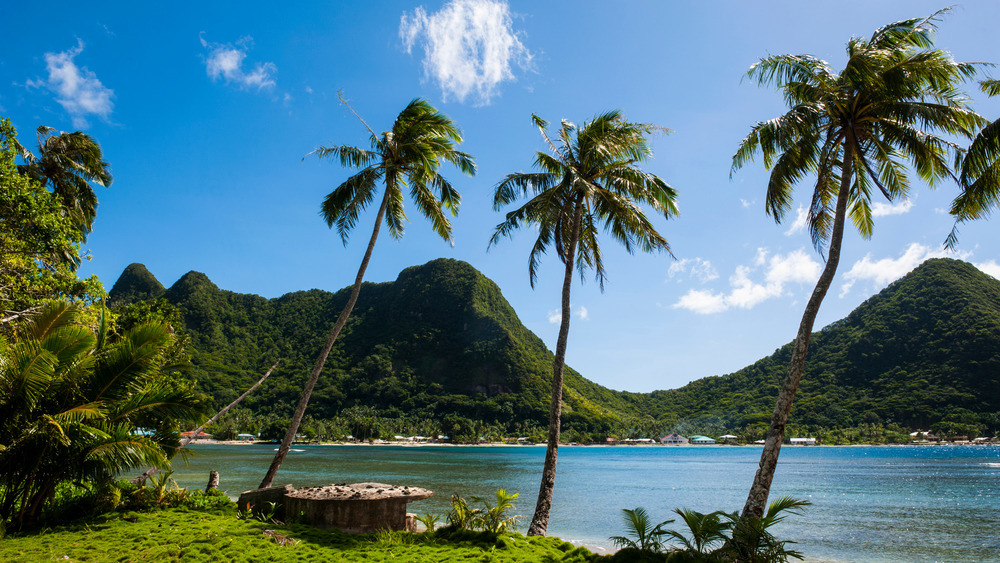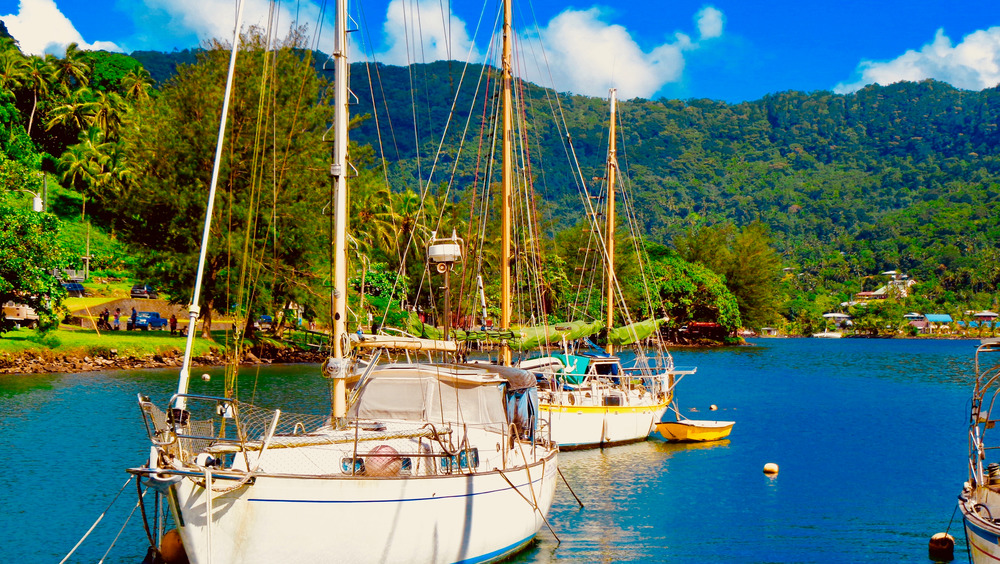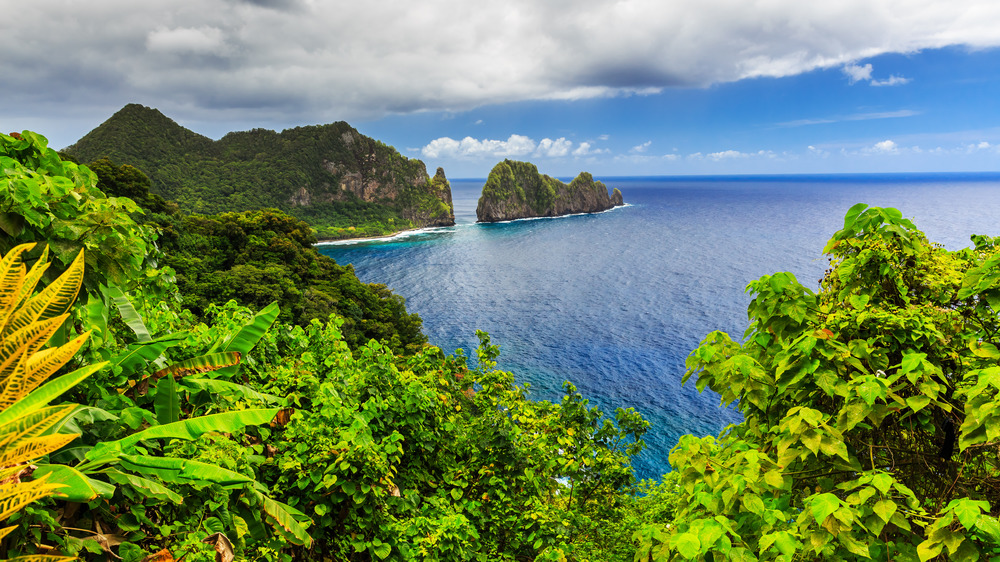How The United States Stole American Samoa
Whether it's suppressing independence fighters in the Philippines, economically exploiting Puerto Rico, or atom-bombing the crap out of the Marshall Islands, the United States has a long history of playing empire with islands far from its own borders. The country finally gave in and granted Hawaii statehood in 1959, but many others have been subjected to U.S. rule without enjoying benefits like being able to vote or self-govern. American Samoa is one such case.
According to Britannica, the Samoan islands have been inhabited since Polynesians — most likely Tongans — arrived around 1000 BC. It is believed that within five centuries, the islands became the point of origin for people who voyaged east to settle other islands in Polynesia. The first European to sight Samoa was Dutch navigator Jacob Roggeveen in 1722, and others followed. As noted by World Travel Guide, the locals earned a fierce reputation after they attacked French settlers in a skirmish that led to a stretch of coastline on the island of Tutuila being named Massacre Bay. The first missionaries from the London Missionary Society arrived in the 1830s, and although there was some resistance from the natives, missionary presence increased and eventually spread to other islands in the archipelago. Although the society's principal proselytizer, John Williams, would end up getting murdered by natives, Christianity had found a foothold in the Samoan islands and was flourishing among the Samoans by the end of the decade.
Americans make their way to Samoa
The first Americans arrived in Samoa in 1839 on the U.S. Exploration Expedition, a crew of missionaries and explorers sent to survey the islands of the Pacific. In his history of that expedition, William Ragan Stanton detailed how they immediately set about doing the most important tasks of such a mission: testing the local women to see how licentious they were in comparison to those on Tahiti. You know, what Jesus would do. They tempted them with presents and lied to them that there were no missionaries aboard their ships, but the women rebuked them. The captain censured his officers' "unauthorized" temptations and called the girls' response "a just and severe rebuke."
U.S. military involvement in the Samoan islands began in 1878, when it established a naval base in Pago Pago Harbor on Tutuila. This military presence would turn into a rivalry with Germany for control of the islands. Scottish novelist Robert Louis Stevenson, who lived in Samoa at the end of his life, recounted a skirmish between the two burgeoning superpowers that nature put a disastrous end to before either side could do any damage. In his 1892 book A Footnote to History: Eight Years of Trouble in Samoa, he wrote of how German warships attempted to attack American vessels, but a typhoon came through before they could begin. The two sides ended up calling a truce, since after the storm abated there were no more war ships left to fight the battle.
The United States gains control of American Samoa
By 1899, Samoa was divided into two spheres of influence, with Germany occupying the islands in the west, and the United States controlling those in the east. Local chiefs on individual islands made formal concessions in the first years of the 20th century. By 1904, they had ceded all of the eastern islands to the United States, but Congress didn't formally accept them for decades. American Samoa came under the administration of the U.S. Navy in 1900, and the islands were used as a strategic military outpost in which the local leaders had diddly squat in the way of administrative powers. According to GlobalSecurity.org, the naval base at Tutuila was the largest U.S. defense group in the Pacific during World War II.
After the war, American Samoa grew less important as a military outpost, and in 1951, control of the territory was handed over to a different part of the U.S. government. In a twist of irony so acute it feels like the stuff of a grand postmodernist novel, control of the collection of islands almost 7,000 miles from Washington, D.C., was transferred to the U.S. Department of the Interior, under which it remains to this day. Samoans have since campaigned for the right to self-govern, and in 1977, they elected their first local governor. The territory elected a delegate to the U.S. House of Representatives in 1981, but to this day, that delegate is a nonvoting member of the House.


